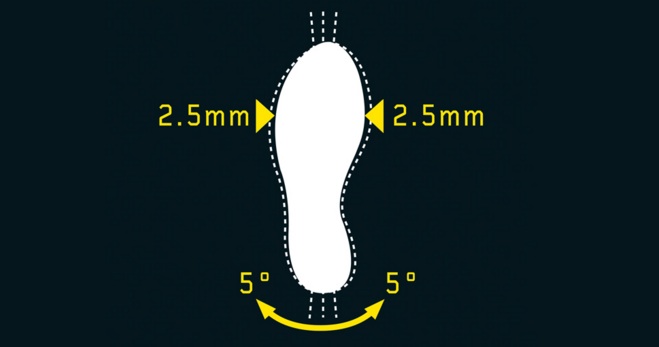
With cycling cleats and pedals, pedal float is how much your foot can move and rotate while clipped in to the pedal. The degree of how much your foot can move while attached to the pedal depends largely on pedal type as well as cleat choice. There are varying degrees of float that have an ideal scenario for when they should be used. Having the wrong pedal float can cause injury so it’s important to choose the right one for you depending upon your bike fit as well as personal anatomy.
Why You Should Have Pedal Float
Pedal float is built in functionality with the objective of allowing your foot to rotate to its natural position to keep your ankle, knee, and hip in a natural position. Everyone’s natural foot angle, the angle at which your foot naturally falls when you walk or pedal, is extremely difficult to line up perfectly on the bike. Because of this, the little bit of float in the pedal allows you to rotate your foot ever so slightly which in turn changes the rotation of your shin and thus knee ever so slightly. If you can’t rotate to achieve this natural position, added stress is placed on the knee joint which over time and at high stress, can cause knee pain.
What the Ideal Pedal Float Is
The perfect amount of pedal float depends on how dialed in your position is on the bike. A bike fit in general wants to position you so your body is able to function in its natural ranges of motion. This means that with cleat position, they are placed at the correct location on your foot as well as at the correct angle to account for your natural foot angle. If your cleat is positioned perfectly so your foot is in its natural position and your knee is lined up how it should be, you don’t need any pedal float. Getting this perfect position often takes a fair bit of trial and error in moving and rotating the cleats to where they feel perfect, which is why most people should and do ride with some amount of pedal float.
Pedals and cleats often range from 5 to 15 degrees of float. If you don’t have the best fit it is better to error on the higher end to not constrict your foot to an adverse angle. The one risk with higher degrees of float angle is that your foot is not as stable on the pedal which allows your knee to constantly change its tracking which can be bad. The solution to this is getting a better fit on the bike from an expert bike fitter or by doing it yourself (“How to Do a Proper Bike Fit”)
The mid to lower degree of float angle is ideal as it allows a little bit of movement to position your foot in the correct angle while keeping your knee tracking in relatively the same path. Aim for less than 8 degrees of float as this will give you enough float to allow for any alignment discrepancies, but not so much that you knee may track poorly.
Does Pedal Float Hurt your Knees
The improper amount of pedal float can hurt your knees. Too little float with your cleats not placed in the exact correct position will result in high stress to your knees which can result in injury especially over time. Too much float can cause your knee to not track properly in the same line. Your feet will be sliding around on the pedals on an unstable platform.
If you already have knee issues, make sure to change the angle of your cleats so it promotes natural foot alignment along with adjusting your float. An expert bike fitter can give you more detail and make sure you are in the best position to resolve your knee pain.
Variety of Cleat Types
Each pedal brand has its own qualities and most have a number of different cleat options depending on how much pedal float you want. These often come in different colors to differentiate from no float to a mid-range degree of float to a high degree of float. A little bit of research on your pedal type will show you what cleat options are available to get your ideal pedal float.
Pedal Release Tightness
On some pedals the degree to which the clip engages the cleat can be adjusted. Pedal float is in the cleat itself and not the pedal so adjusting this to help with pedal float won’t help. If it is loose however, your foot could flex the spring-loaded mechanism which will feel loose particularly on the upstroke of the pedal stroke. You can tighten this slightly to make sure it’s firm and not moving with each pedal stroke. Over tightening will cause it to be difficult to unclip as well as take more force to disengage your cleat in the event of a crash.
Pedal float is a great solution and avoidance to knee and other issues resulting from improper foot angle on the pedal. Even with a professional bike fit, everything may not be perfect so having a margin of error built in to your pedals can pay dividends in the long run to avoid injury. The right amount of pedal float for you depends on your position so make sure that’s correct first and then analyze your natural foot angle to position your cleat correctly so you don’t need a large degree of pedal float. With this and a low to mid-range of pedal float, you should be in a good position to avoid injury.